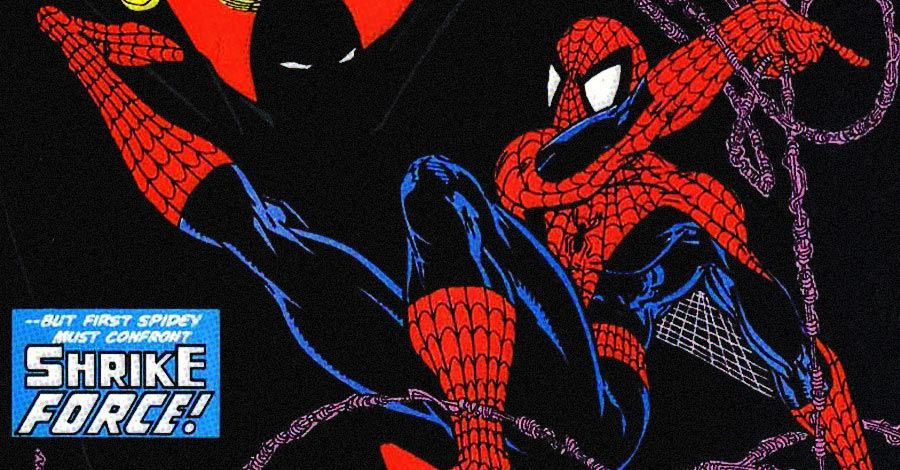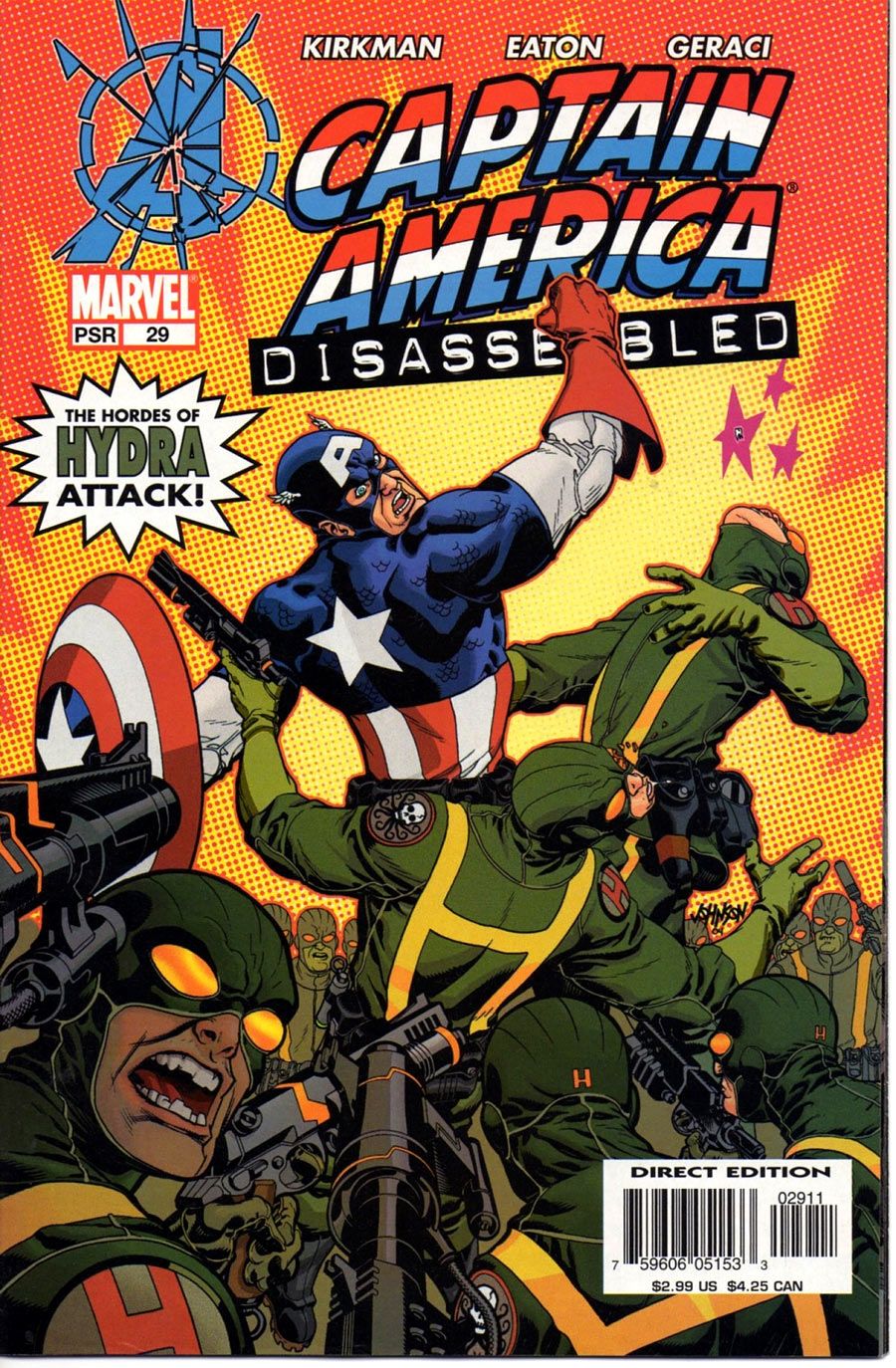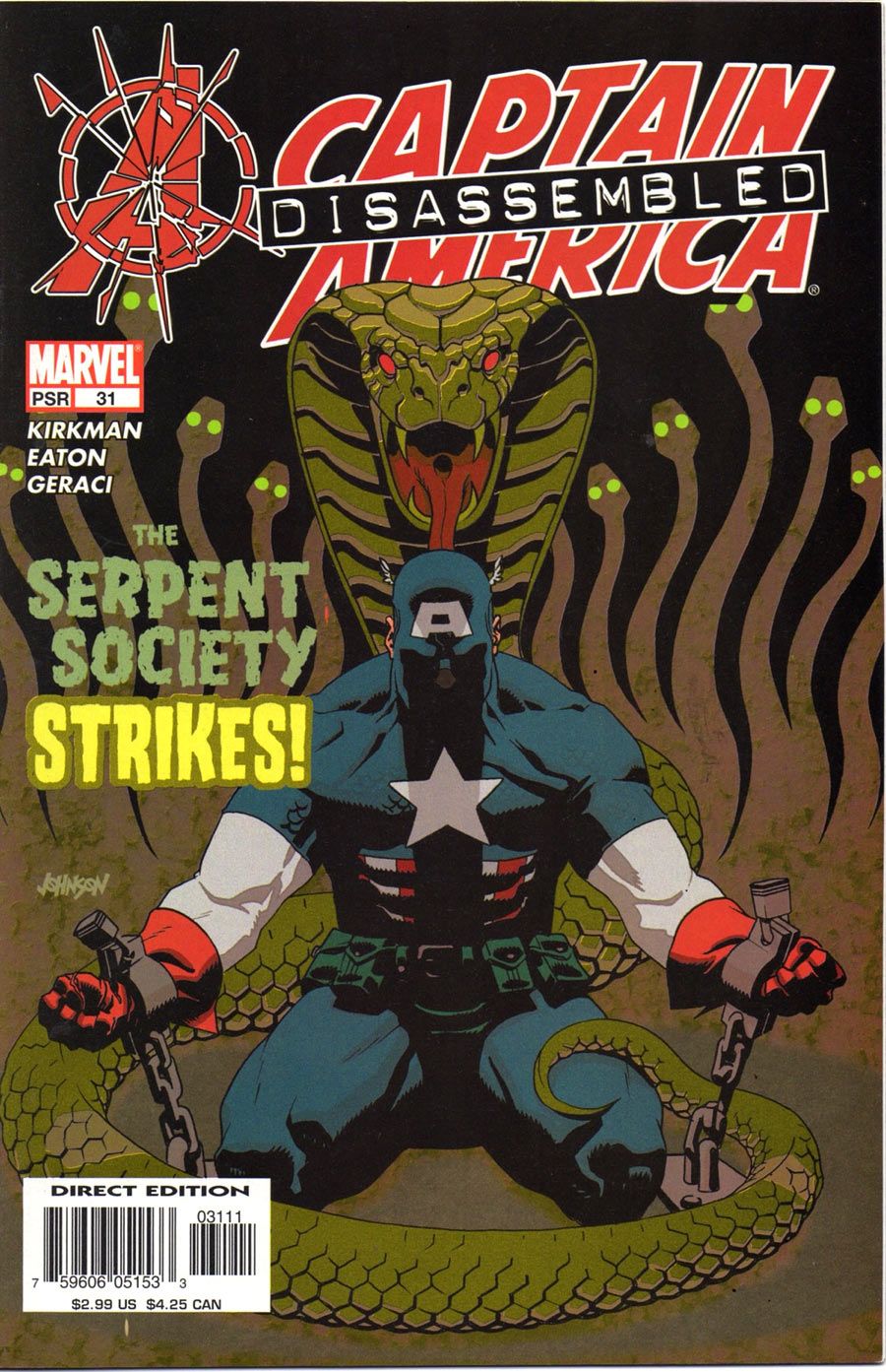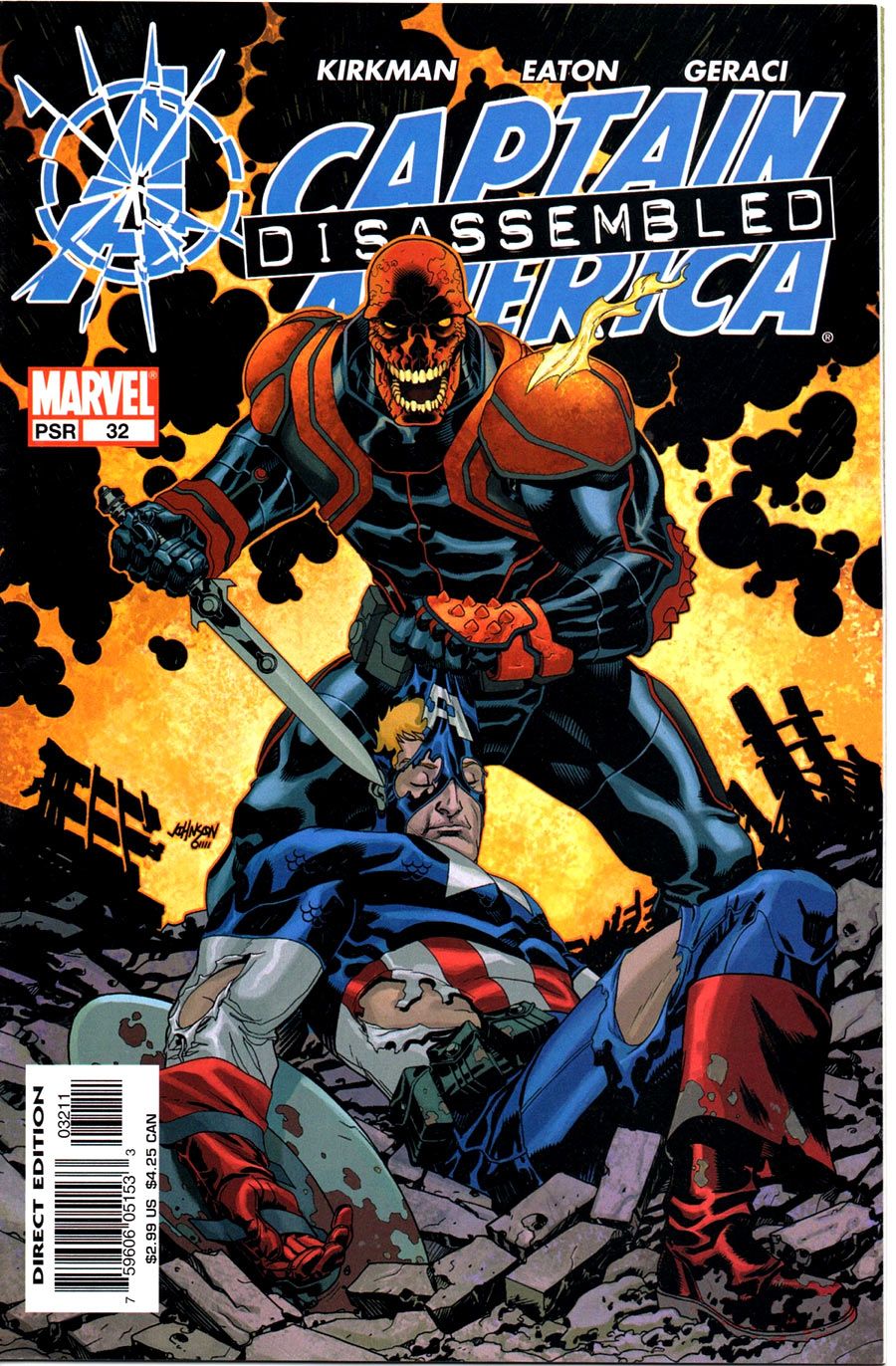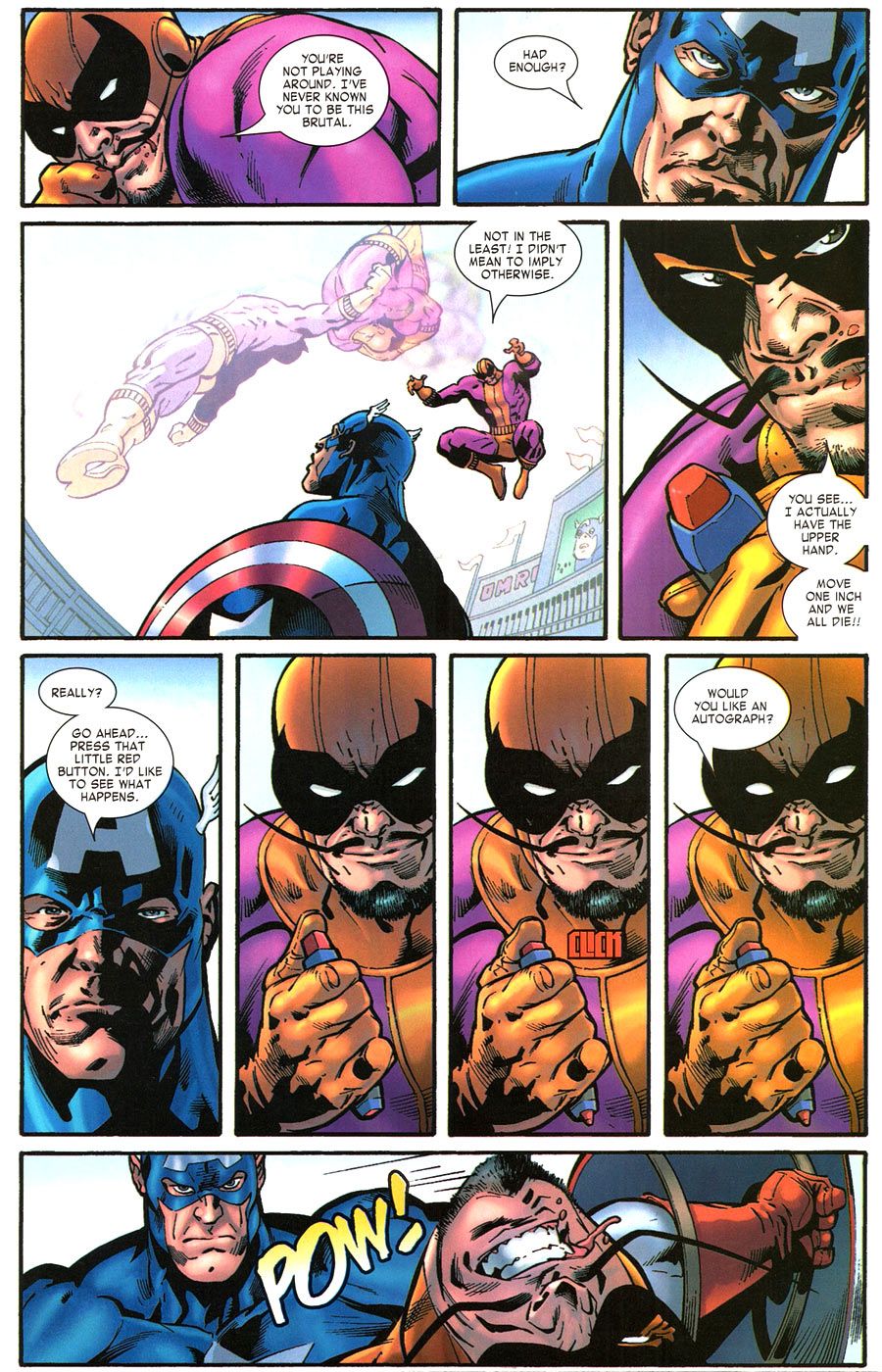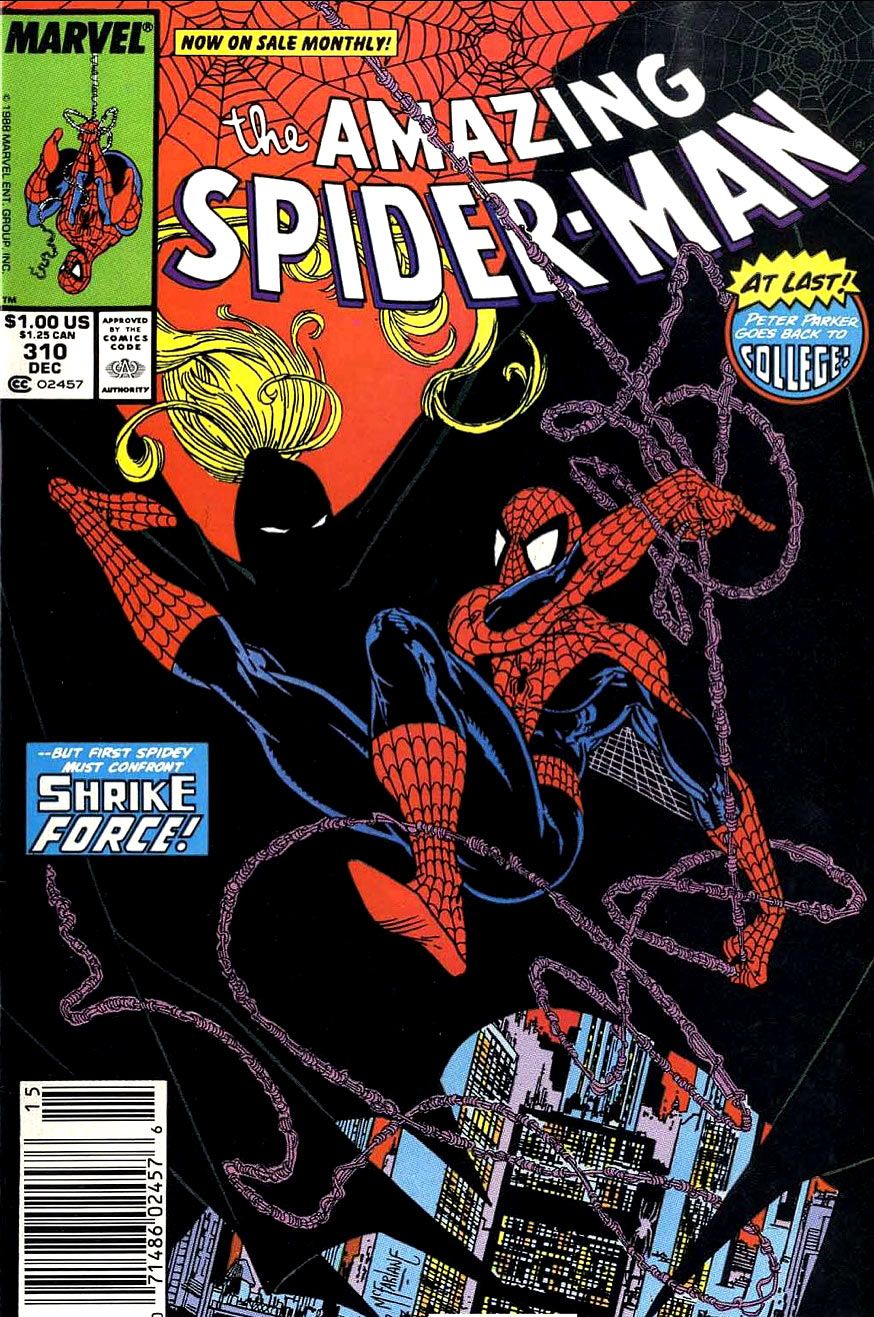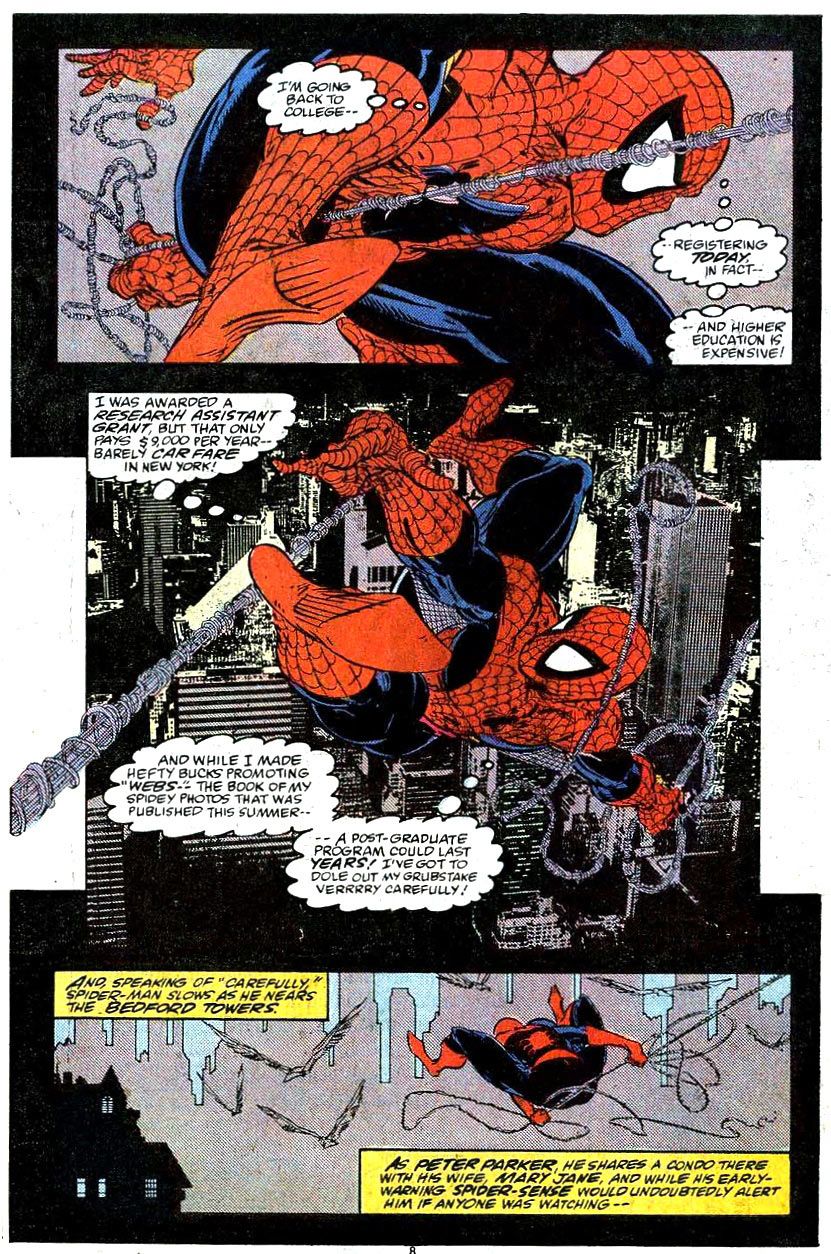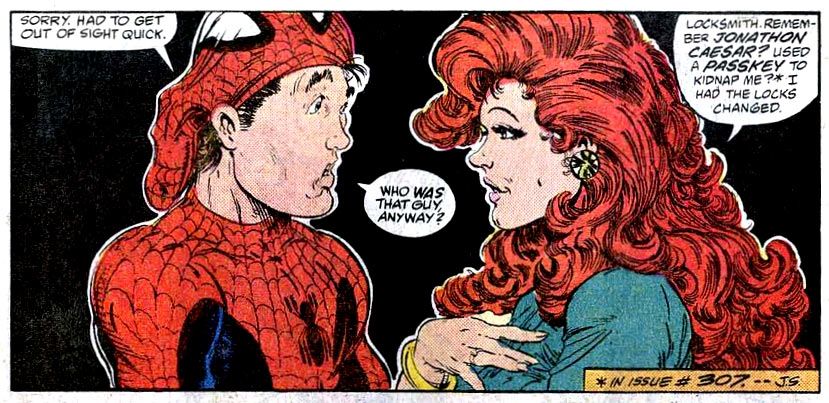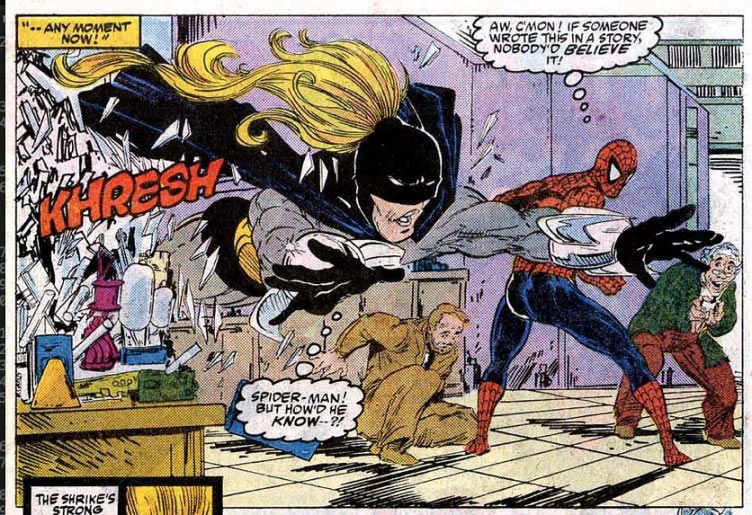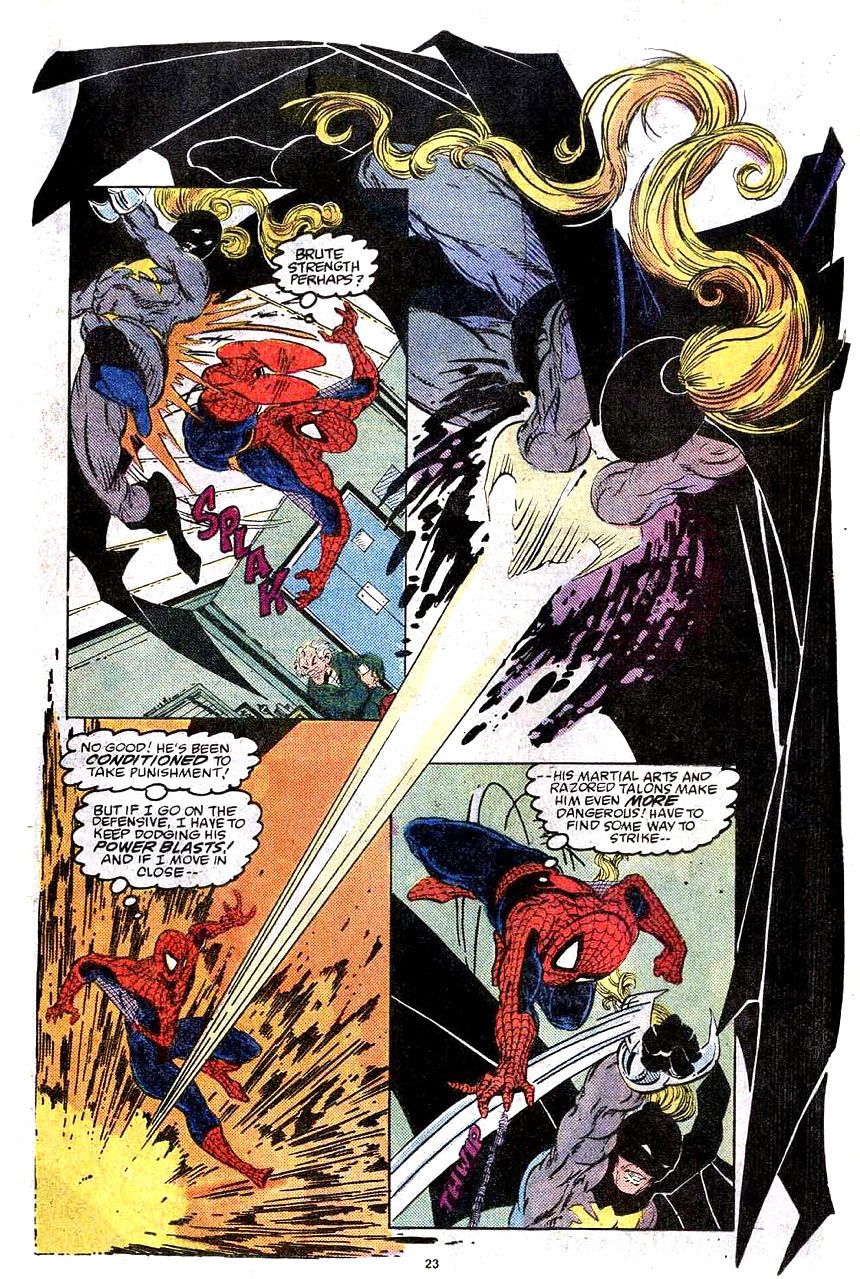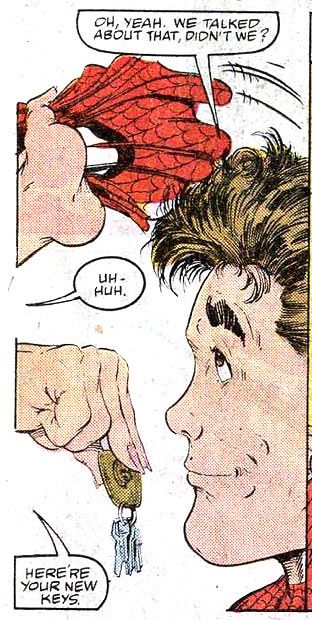CAPTAIN AMERICA: NOT THE MOVIE
Stop me if you've heard this one before:
Batroc the Leaper.Hydra's attempt to destroy S.H.I.E.L.D. from the inside. Captain America sent on a rescue mission for all the wrong reasons.
This is not "Captain America: The Winter Soldier."This is Robert Kirkman's 2004 brief stint on "Captain America" #29-32, part of the "Avengers Disassembled" era at Marvel.Drawn by Scott Eaton with inks by Drew Geraci, the story has its moments, but feels somewhat stilted and unsure of itself in many places.It's an old-fashioned superhero story with simple motives and double-crosses explained away in great gobs of exposition at the end.It has a few nice pieces, but they don't add up to a satisfying whole.
It's not a story without its charms, but it hardly feels like the kind of thing someone would want to hang their career on.Steve Rogers immediately falls back in love with Diamondback far too quickly and easily.The romantic tension between the two feels grafted on, not natural.Captain America is a super soldier one moment, and a badly beaten, helpless whelp the next, only to turn on a dime and find strength again when the plot dictates it, or to pull out some creatively ridiculous shield bouncing technique to knock out just the bad guys he needs to.Characters are thrown into the story without introduction.Maybe they were series regulars at the time that I've just forgotten about?Possibly, but it does seem odd to not include their full name in the story first.(The recap pages at the beginning of each issue turned out to be big helps.)
It's a stew of plot elements.The Red Skull is using Diamondback to kill Captain America, who she loves again but who she plots against.(It's explained in the end, don't worry.)A rogue agents inside S.H.I.E.L.D. -- who is working for Hydra -- is disguising himself as Nick Fury to send Cap out on a mission to raise a politician's visibility for some favors.That's the same agent who helps the Skull out with a new fancy power suit.
The plot doesn't feel right, pacing wise.Reasons keep coming up to force Cap and Diamondback apart at convenient moments for convenient periods of time.Lots of unrelated things happen to propel the story forward, such as the entire battle against the Serpent Society, or the Batroc scene.Further demerits for placing a Mr. Met-looking mascot in Yankee Stadium.That points to another issue with the pacing, where splash pages often show up in the wrong place.The one with Steve Rogers waiting outside Diamondback's apartment door at the end of the third issue repeats the moment on the previous page. The opening splash at the baseball game doesn't move the story ahead one inch. You don't even see Rogers or Diamondback in the background, so it's not even like it's a scene setting page.
Scott Eaton's art is solid, like a blend between Paul Pelletier and Steve Epting.His characters have mass and shape from the way he draws them, not from the way they're colored.He adds just enough detail to feel more "realistic," but without ever looking photorealistic or stiff.He keeps the underlying "cartoonishness," while cloaking it in the garb of the real.
The structure of the story feels like a mix between classic Mark Gruenwald-era Cap, complete with Diamondback as the love interest, and Kirkman's "Invincible." But walking down that middle line and committing to neither undercuts the story.There are well done lighter moments in the story, such as the brief fight against Batroc, but they sit awkwardly between the general plot's structure to move Red Skull into place to kill Cap.The bit where Steve Rogers rents "Yankee Doodle Dandy" all the time just to visit his friends at the video store comes across less Big Blue Boy Scout and more Crazy Old Man.
It's a storyline that's more a tossed salad than a melting pot. But, then, if someone told me I had four issues of "Captain America" to write and that was it, I might be tempted to throw everything in there I'd ever want to do.Make the plot fit around that.Add in the elements I enjoyed growing up from the era I remember the most fondly.In short, I might come up with something exactly like this.But as a standalone story?You're better off reading "Marvel Zombies".
One last thing: Robert Kirkman is a well-known fan of Erik Larsen's corner of the Image Universe.It's where he got his first big breaks.This four-part story is titled "Super Patriot."Nice.
AMAZING SPIDER-MAN #310: "Shrike Force"
Peter Parker returns to school, and immediately comes across suspicious activity that leads to The Tinkerer and Killer Shrike.
There was a time in comics fandom where the ultimate crossover possibility was -- well, it was probably still Avengers/Justice League of America.But we all knew that would never happen.Instead, there was talk of a Spider-Man/Batman crossover drawn by Todd McFarlane. It was a natural character pairing for the artist who had done a couple of Batman issues before, and who was the definitive Spider-Man artist of the time.It would have made a million bucks, too. I don't know why it never happened, but it didn't.We did eventually get a Spawn/Batman crossover, butthat's it, as far as McFarlane is concerned.
We're left with "The Amazing Spider-Man" #310, instead, in which Spider-Man fights a random super villain by the name of Killer Shrike, who bears an uncanny resemblance to Batman.Gray suit, yellow emblem on his chest, ridiculously long black cape, a black cowl.The biggest difference is Shrike's three or four foot long yellow ponytail flying in the breeze behind him.It looks great, but is highly impractical.But, hey, this is comics.Let's have fun.
The issue opens as Spider-Man stops Shrike before he can kill a security guard trying to protect a money truck.Shrike gets away, and Spider-Man completely forgets about him. It's an action bit that has no consequences.It's a nifty little scene, but is ultimately a waste of time. It's just another day in the life of Spider-Man, randomly stopping major crime in the city.It makes for a great action piece, and McFarlane shines in it.There's one very confusing moment where Spider-Man has to deflect a dumpster Shrike throws at the guards to get away, but David Michelinie's script covers that in the next panel with some thought balloons.
In fact, that scene leads into a classic two page sequence of Spider-Man webbing his way around the city and thinking about the issue's plot. It's a trick Michelinie likes to use, andMcFarlane fans won't ever complain because it leads to nice splashy superhero-in-costume art.In retrospect, it feels like a cheat, though one that's necessary at a time when stories weren't designed to be told in six parts.
Then, the hilarity begins.You may remember in the last couple of issues that Mary Jane Watson-Parker was kidnapped by a stalker who lived in the same building.He threatened to mutilate her, and she had to fight him and two security guards off before grabbing a gun and running into Central Park to save Spider-Man with some errant shots.The effects of this horrific event are not forgotten as --
-- wait, no, we're glossing right the heck over them.And we're using some clunky exposition along the way:
And that's that.Then we're back to newlywed chat with inferred plans for adult relations that night, using the code word "dessert."
So Peter goes to Empire State University, to work as a Research Assistant for Dr. Evan Swann, a white lab coated researcher who's getting strange deliveries and working in a locked lab room that nobody is allowed in but that sets off Peter's Spidey Senses.Peter does what any rational thinking adult would do, and pays Dr. Swann a visit as Spider-Man, where Swann immediately folds and admits he's basically being blackmailed by the Tinkerer.That didn't take much effort.
And the Tinkerer, you see, is working on a new device for -- you guessed it -- Killer Shrike.It's an amazing coincidence.So amazing, in fact, that the author cops to it to help deflect criticism:
There's a second nice Shrike/Spider-Man fight scene, with McFarlane even going wonky on a page layout with Shrike's cape.Lovely stuff.
To make a long story short, The Tinkerer defeats Shrike, and Spider-Man hands Swann off to the authorities.Don't worry, Swann will get a light slap on the wrist and be back soon.
Shrike, however, I couldn't remember anything about.Turns out, I have a very short memory.He was in the "Secret War" miniseries a few years back, and joined The Thunderbolts during Civil War, then The Masters of Evil.He appeared most recently in "The Superior Spider-Man."He's not forgotten, after all. He turns out to be another one of those lower profile characters of this era that the fans of the time who later became professionals would keep bringing back. See Paladin's return in Brian Bendis' "Daredevil," or Dan Slott including Slapstick in "Avengers: The Initiative."Lots of people have tried to bring back Silver Sable, for another example, but she hasn't stuck.That one surprises me the most.Someday, she'll be a big player in the Marvel Universe.She has too much potential, despite a ridiculously bad series from the early 90s.
Spawn Watch: The credits to this issue include "With a background assist by Terry Fitzgerald."I don't know where that assist came in, but there is a piece of scientific equipment whipped around at one point that includes "T.F. + C.C." on it.Fitzgerald and wife, perhaps?
Felix Watch: He's on the keychain Mary Jane gives Peter.
Next issue: The first of two "Inferno" related issues brings us Mysterio.But really, it's the issue after that where things go completely bananas.Stay tuned!
Twitter || E-mail || Instagram ||Pipeline Message Board || VariousandSundry.com || AugieShoots.com || Original Art Collection|| Google+

